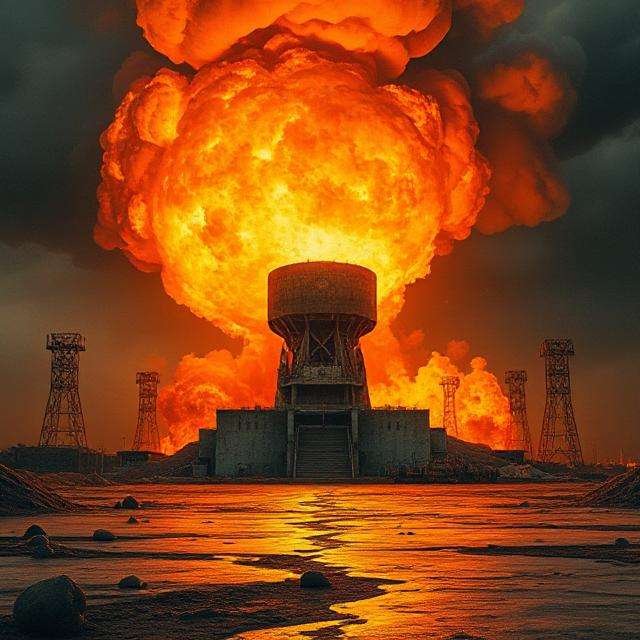Ceasefire Violated By Pakistan
May 10, 2025, was a day that began with a glimmer of hope for de-escalation on the tense India-Pakistan border, following a period of heightened military activity. However, this hope appeared to be quickly challenged by reports of alleged ceasefire violations emerging just hours after a truce was announced. This rapid turn of events underscored the inherent fragility of the situation along the Line of Control (LoC) and the International Border (IB), where the specter of firing and shelling continues to loom.

The preceding days had witnessed a significant escalation in hostilities between India and Pakistan. Following the terrorist attack in Pahalgam on April 22nd, India had conducted “Operation Sindoor,” targeting alleged terror camps.1 This led to strong reactions and military responses from Pakistan, including reported drone incursions and artillery fire across the border in multiple sectors.2 The exchange of fire had caused concern globally, with international actors calling for restraint.3
Against this backdrop of heightened tensions, a crucial development unfolded on May 10, 2025. Both India and Pakistan announced that they had reached an understanding to cease all firing and military action.4 The agreement was reportedly brokered through direct communication between the Directors General of Military Operations (DGMOs) of the two countries.
According to statements from Indian officials, the Pakistani DGMO initiated the call, and an understanding was reached to halt all hostilities on land, in the air, and at sea, effective from 5:00 PM Indian Standard Time (IST) on May 10th.5 This announcement was welcomed by various international figures, including US President Donald Trump, who reportedly commended both nations for their decision to opt for peace.6
However, the optimism generated by the ceasefire agreement was quickly tempered by subsequent reports of alleged violations. Within hours of the 5:00 PM deadline for the ceasefire to take effect, news began to emerge of firing and shelling in several sectors along the border.
Reports from various sources indicated alleged ceasefire violations in areas such as the Palanwalla sector in Jammu, Akhnoor, Rajouri, and other locations along both the LoC and the International Border.7 The nature of the reported violations included instances of artillery shelling, small arms fire, and even alleged drone activity.8
The timing of these alleged violations, coming so soon after the formal announcement of a ceasefire, was particularly concerning. It raised questions about the effectiveness of the agreement, the level of control over troops on the ground, and the commitment of both sides to upholding the understanding.
Reactions to the alleged violations were swift. Political figures, including Jammu and Kashmir Chief Minister Omar Abdullah, reportedly expressed shock and concern, with Abdullah tweeting about hearing explosions in Srinagar after the ceasefire was supposed to be in effect.9 Residents in border areas who had perhaps breathed a sigh of relief upon hearing the ceasefire news were once again plunged into uncertainty and fear. Reports of blackouts being reimposed in several border districts in Jammu, Punjab, and Rajasthan further highlighted the renewed tensions on the ground.
Official statements specifically addressing these immediate alleged violations on May 10th, directly after the ceasefire time, were initially limited as the situation unfolded. However, the very occurrence of these incidents raised implicit questions for both sides regarding adherence to the agreed-upon terms. The situation underscored the complex realities of managing a volatile border where decades of mistrust and entrenched positions can easily undermine attempts at de-escalation.
The events of May 10, 2025, served as a stark reminder of the fragile nature of peace on the India-Pakistan border. While the agreement to cease fire offered a moment of hope amidst escalating tensions, the subsequent reports of alleged violations highlighted the significant challenges that remain in ensuring a lasting and stable truce. The coming days, including the scheduled meeting between the DGMOs on May 12th, will be crucial in determining whether the ceasefire can hold and pave the way for a more sustained period of calm along the volatile frontier. The international community, which had encouraged de-escalation, will undoubtedly be closely watching the developments, hoping that the commitment to peace, though tested, will ultimately prevail over the dynamics that have historically led to violations. The well-being of the civilian populations living under the constant threat of border fire remains a paramount concern, underscoring the urgent need for both nations to find a way to silence the guns effectively and permanently.
Also Check Out The Article – India & Pakistan Agrees To Ceasefire
Also Check Out The Full Article of Ceasefire Violation On – India Pakistan Tensions







